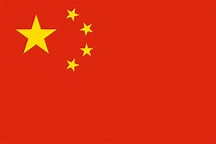The Indian Navy celebrates Navy Day on December 4 which coincides with the naval missile attack on Karachi harbour during the 1971 war with Pakistan. That happened when the Indian Navy had complete domination in the Indian Ocean Region (IOR) amongst resident nations. Forty-seven years since, a lot has changed which has impacted the IOR security paradigm. It is worth examining some of the emerging dynamics in the Indian Ocean and opportunities it offers to the Indian Navy to exploit her full potential.
During the Cold War, there was relative calm in this region, there being two power centres and bipolar alignments. The area of containment and competition was primarily in the Atlantic and Pacific. The Indian Ocean did not witness turbulence as if this Ocean did not flow between two oceans. All that changed after the end of the Cold War. The European nations outsourced most of their security to the US under NATO umbrella. Oil prices shifted the focus to the Gulf. The attention of the US was more towards the security of sea lanes of communication for safe passage of energy for themselves and the allies. Of late, having declared pivot to Indo-Pacific Strategy, the US seems to be looking inwards with its America First Policy. This will have an impact in the deployment pattern of the US Navy in this region. Countries, not in the NATO but energy dependent on the gulf, have been deploying their naval combatants in the IOR. It was not uncommon for the Indian Navy to exchange pleasantries with naval ships from over 15-20 countries from outside the region. The numbers went up to 38-40 countries at the peak of piracy in the Gulf of Aden off the Somalian coast.
Iran-Iraq conflict, invasion of Kuwait, 9/11 WTC attack and the fall of Saddam Hussein changed the contours of security worldwide. Global war on terror, Taliban in Afghanistan, Pervez Musharraf’s adventure in Kargil etc. finally spilt into the sea when 26/11 happened in Mumbai. It was significant and proved that terrorists could also use the seas apart from the navies to wage war by breaching territorial integrity of a nation. The entire focus, worldwide, shifted towards coastal and maritime security.
While these events were taking place, one country was rapidly enhancing its economic and military power — China. The hunger for power, both economic and military, necessitated the increased need for energy and security of the routes thereof, both over seas and land. China began strengthening her navy by building nuclear-powered and nuclear-armed submarines and building her first aircraft carrier, clearly announcing her far sea operation intentions. This was divergent from her earlier near sea operation’s vision. China became more and more aware that with the passage of time her needs would multiply and could be met only by transcontinental and oceanic expansion. Clearly, the Gulf, South America and Africa were the energy and resource destinations. To secure the lanes of these passages and acutely aware of the long logistics tail associated with these destinations, China used her economic diplomacy which invariably facilitated her naval presence in the Indian Ocean. Military Strategy Paper of 2015 spelt out clearly its intentions on becoming a maritime power. The subsequent debt trap of Sri Lanka, Myanmar and possibly Maldives speaks for itself.
 Another important geopolitical development was the elimination of Osama bin Laden in Pakistan by the US Navy SEALS. This led to the US and NATO pull-out from Afghanistan and the decline of Pakistan’s relevance in the US calculus. China found this to be an opportunity to fulfil her desires of Indian encirclement and devised the CPEC under the Maritime Silk Route (MSR) and took control of Gwadar port on the Makran coast. Gwadar offered twin advantages. While China would ensure surveillance on the US naval presence in the Gulf across Straits of Hormuz, its surrogate Pakistan could counter any attempt by the Indian Navy to restrict their operational space on the western flank.
Another important geopolitical development was the elimination of Osama bin Laden in Pakistan by the US Navy SEALS. This led to the US and NATO pull-out from Afghanistan and the decline of Pakistan’s relevance in the US calculus. China found this to be an opportunity to fulfil her desires of Indian encirclement and devised the CPEC under the Maritime Silk Route (MSR) and took control of Gwadar port on the Makran coast. Gwadar offered twin advantages. While China would ensure surveillance on the US naval presence in the Gulf across Straits of Hormuz, its surrogate Pakistan could counter any attempt by the Indian Navy to restrict their operational space on the western flank.
Fact remains that despite China’s effort to create land-based routes for energy transportation, over 50 per cent of her hydrocarbon will continue to transit over Indian Ocean in next three to four decades. The Malacca dilemma is not disappearing in a hurry. This is significant since China justifies the presence of her navy in the IOR, thus restraining the Indian Navy’s manoeuvring space. Also, most of Indian naval movements and activities could be susceptible to surveillance. China’s support to Pakistan emboldens it with an added inventory of eight additional Chinese submarines and possibly more of Ziangwei class frigates in future. The likelihood of port facilities in Myanmar, Sri Lanka and Male and full-fledged bases at Djibouti and Gwadar would lead to near all-time presence of the Chinese Navy. The Chinese are determined to displace the US in the Pacific and IOR as the dominant naval power. This has become very evident by China’s robust assertion and strident behaviour in its maritime littorals and construction of artificial structures and military infrastructure in the South China Sea. China’s attitude has been one of complete disregard to rule-based world order having rejected the Permanent Court of Arbitration (PCA) verdict on South China Sea nine-dash-line, a case brought up by the Philippines.
China and India have avoided open rivalry despite their border frictions. There has been growing geo-economic competition on account of China Pakistan Economic Corridor (CPEC) which passes through Gilgit Baltistan, an area forming part of Indian territory occupied by Pakistan, the Maritime Silk Route touching ports in Sri Lanka and Pakistan. Chinese submarines deploy in the Indian Ocean more often. These developments in and around Indian Ocean have encouraged the Indian Navy to enlarge her combat engagement with the US and Japan with the likelihood of Australia joining in the near future. This has also encouraged the US to cooperate with India in its ‘Make in India’ drive. Indian naval chief announced last year that ships, aircraft and submarines are on mission-based deployment at all choke points in the IOR 24×7 to make their maritime domain awareness picture robust and current. This gives the naval combatants more time to react to any developing situation. The recent political developments in Maldives and Sri Lanka have only justified the navy’s long-standing belief that security of a region is important for economic development of India. Prime Minister Modi’s coined acronym SAGAR (Security and Growth for All in the Region) was both timely and visionary political statement.
This is the backdrop in which the resident and non-resident navies will be operating in the near future. The entire sea space is likely to become more crowded but transparent, each country aware of other’s deployment. The sea lanes of communication will be the focus area. Enhanced economic activities will call for more and more cooperation to avoid unintended or accidental confrontation. Shared security could become a necessity. There would be an increased presence of combatants since suspicions would be hard to dispel given the relations amongst the regional countries.

The historical baggage of unresolved boundary and collusion of China with Pakistan would continue to exert pressure on Indian defence budget. Maritime deterrence, both conventional and nuclear, would have to be maintained to prevent any fall out of escalation over land boundaries. Security of sea lanes closer to Makran coast will become a bigger challenge given the belligerence of Pakistan which is likely to increase because of Chinese collusion and full operationalization of Gwadar. The protection of trade, against both traditional and non-traditional security challenges, will witness overall increase.
This situation offers opportunity of greater political (budgetary) and diplomatic support for scaling up naval capabilities for round-the-clock surveillance of the IOR. The navy will need to add to its maritime patrol aircraft and anti-submarine helicopter inventory urgently apart from its ongoing surface ship and submarine building programmes. Since airborne platforms are import dependent, the identification, selection and negotiations would have to be completed post-haste for induction. The navy has been discharging these duties with available assets in a professional manner. Time has come to sustain these operational deployments for longer periods in the coming decades. We have to take care of our own security and prosperity. We cannot expect any other country to fight for our cause in the IOR or over continental borders.
(Acknowledgement :- This is a reprint with author’s consent. Original published in the guest column of “Force” in December 2018. The author is former C-in-C Western Naval Command & Chief of Integrated Defence Staff.








